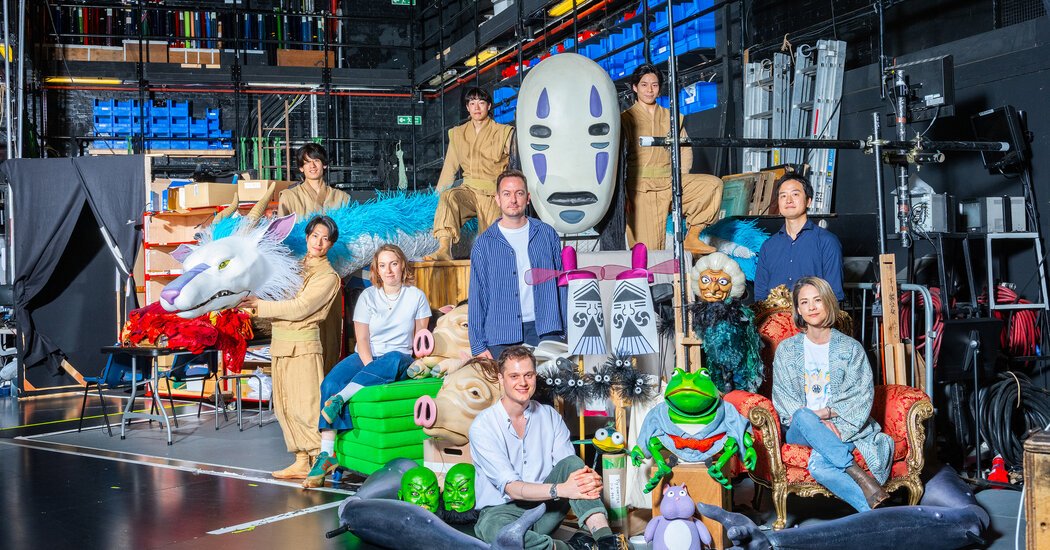“Everyone Who Made This Happen” takes a look at the outsize teams of artists and creative types it often takes to produce a single work.
Number of people involved: Around 70, including 30 performers.
Time from conception to opening night: Four years and three months.
There was never any doubt as to whether the director John Caird’s stage adaptation of “Spirited Away” would incorporate puppets. They were part of his original pitch to Hayao Miyazaki, the writer and director of the beloved 2001 animated film, in which the heroine, Chihiro, and her parents are transported to another world populated by a colorful cast of Japanese spirits and gods. The questions were, which characters should be puppets, and how would they look and work? Toby Olié, 39, the show’s puppetry designer and director, sketched some initial ideas. Then, in 2021, he and Caird; Caird’s co-adapter and wife, Maoko Imai; the set designer Jon Bausor; and six performer-puppeteers held a two-week workshop in a church hall in East London, during which they explored staging with foam and cardboard prototypes.
From there, Olié and the co-designer of the puppets, Daisy Beattie, 36, started crafting them with a team of over 20. They ended up with 65 puppeteered elements in all — from dynamic particles of soot made of black tubular crinoline to a menacing watch bird with wings rendered from piano wire and organza-covered sheet nylon — but not without some trial and error. Along the way, they tested an iteration of Kaonashi, or No-Face, an enigmatic spirit shrouded in black, with an inflatable body made of ripstop nylon, the same fabric often used in kites, but it felt too slick. “It would have taken away the joy of creating something out of nothing,” says Caird. Instead of filling the puppet with air, they decided only to increase the number of people — up to 12 — operating under its tentlike rippled tulle cowl, giving rise, says Olié, to “this kind of evil flash mob.”
Next came the task of building the nearly 20-foot-long dragon puppet, Haku. First, members of Olié and Beattie’s team constructed a canvas core that runs through the middle of the dragon’s serpentine body; then they fashioned riblike segments out of foam. After a freelancer sculpted a clay model of the dragon’s head, Beattie mummified it in plastic wrap and masking tape and made a pattern that she enlarged with a photocopy machine to construct the full-size version. Simultaneously, a pair of workers used scalpels to hand-carve scales into the dragon’s foam exterior, which was later overlaid with a muslin scrim, painted and finally glazed with a secret acrylic-based formula to give his skin a pearly sheen. Other finishing touches included Haku’s melted-glue teeth and his mane of 5,000 strands of blue tubular crinoline. (Olié, Beattie and their colleague Seb Mayer summoned family members to help twist the hairs so that each one would come to a point.)
Read More: The People Reimagining ‘Spirited Away’ With Puppets


